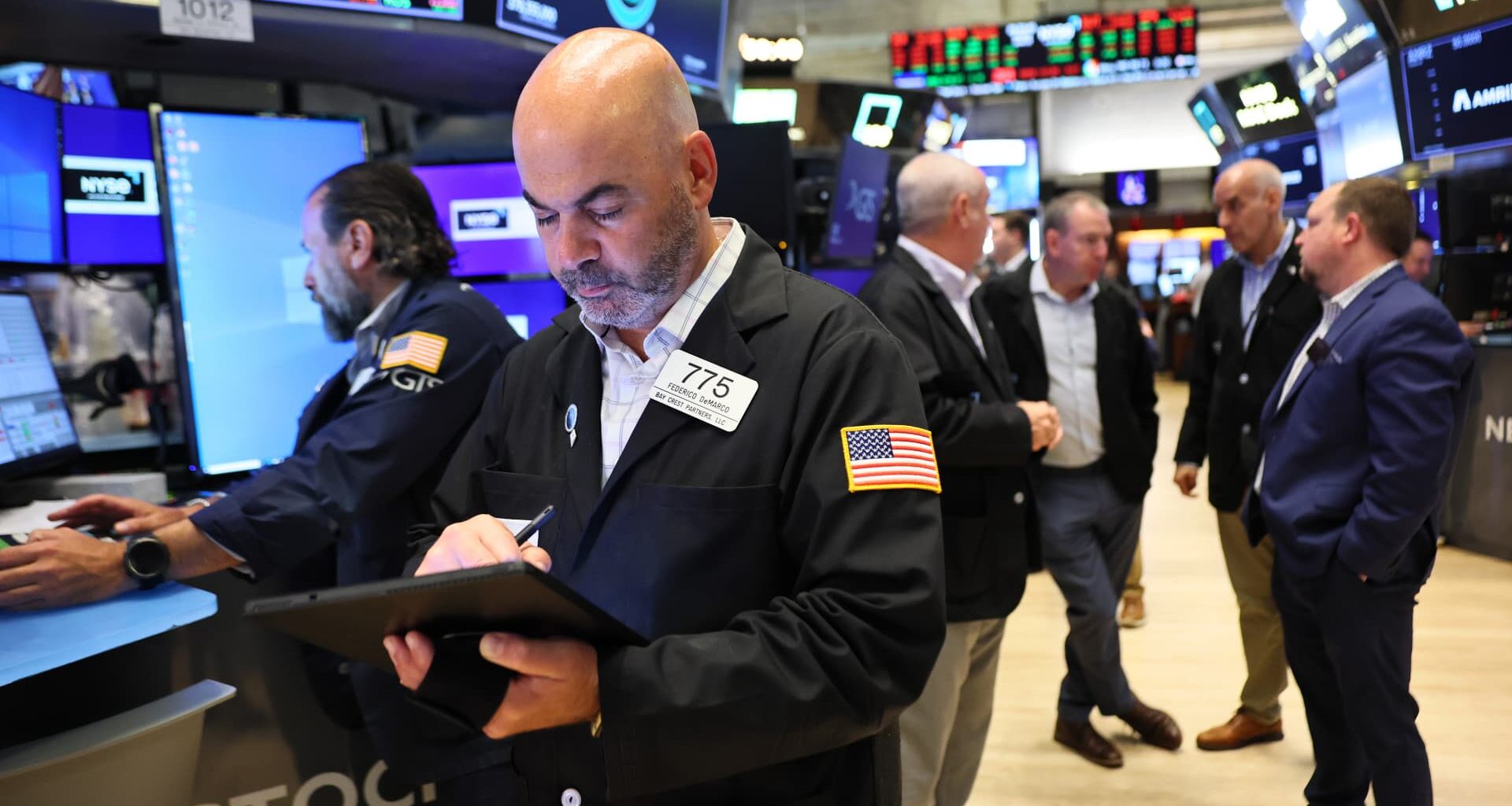Traders work on the floor of the New York Stock Exchange during morning trading on June 23, 2025 in New York City.
Michael M. Santiago | Getty Images News | Getty Images
Stocks rose on Friday, putting the three major averages on pace to round out the week with gains.
The Dow Jones Industrial Average gained 71 points, or 0.2%. The S&P 500 was higher by 0.5%, supported by a surge in shares of names like Gilead Sciences, Monster Beverage and Live Nation following their strong quarterly results. The Nasdaq Composite also jumped 0.6%, a move that places the index on track for another record closing high.
The major averages are currently heading for a winning week, with the 30-stock Dow at a 1% week-to-date advance and the broad market S&P 500 up 2.1% in the period. The tech-heavy Nasdaq is poised for a 3.5% climb on the week.
Gold prices, which were already rising this week on hopes of a Federal Reserve interest rate cut, soared to record highs Friday on a Financial Times report of a possible levy on imported gold bullion bars. That also lifted shares of gold mining stock, with the Vaneck Gold Miners ETF (GDX) up 1% to a 52-week high.
The moves come after the Dow, along with the S&P 500, closed in the red on Thursday, while the Nasdaq outperformed, closing at a record. The blue-chip index saw some sharp swings during the day, up 305 points at its high and down nearly 394 points at its low.
President Donald Trump’s “reciprocal” tariffs took effect at midnight on Thursday, with some of the steepest duties including Syria’s 41% and Laos’ and Myanmar’s 40% rate. Stocks initially rose Thursday morning after Trump announced a day earlier that his 100% tariff on imported semiconductor chips would not affect companies that are “building in the United States.”
How Trump’s trade policies play out, especially as they relate to the semiconductor sector given the significance of artificial intelligence on economic growth, will remain a main area of focus for investors over the coming days, according to Ross Mayfield, Baird investment strategist.
“There’s potential for a complete exemption of tariffs if you’re building in the U.S., but I think there’s still some ambiguity around what exactly that means,” he told CNBC. “If we get any clarity on that today or over the weekend, I think that could be really helpful or potentially risk-off if some of that is walked back or hedged a little bit.”
Later Friday, Trump warned U.S. courts against striking down his tariff policy, writing in a Truth Social post that if the courts were to do that, “It would be 1929 all over again, a GREAT DEPRESSION.” He also said that the duties have been having a “huge positive impact” on the market. Stocks nosedived in the wake of Trump’s sweeping tariff announcement back in April, with the S&P 500 falling into correction territory after seeing its biggest single-day loss since 2020.
“The market’s reaction to the April 2 announcement kind of shows how markets feel about tariffs,” Mayfield said. “Investors are largely anticipating the administration not following through on hyper aggressive tariff plans, so it’s kind of like chicken-and-egg, and I think we’re still kind of in the later stages of figuring that out.”
“If markets anticipate that but don’t react because they’re waiting for the capitulation, the administration could possibly take it that the market is enforcing the policy rather than anticipating a change, so it is kind of a tricky dynamic,” he continued.
The president also announced Thursday afternoon that he has selected Stephen Miran, chair of the Council of Economic Advisors, as his pick to replace Adriana Kugler on the Federal Reserve Board of Governors. Miran will serve out the rest of Kugler’s term, which expires in January, following her resignation last Friday.
“A suggestion that that won’t be the final choice for the actual next term when Kugler’s term expires at the end of January … kind of extends the runway for all of the White House versus Fed kind of rhetoric,” Mayfield said.

